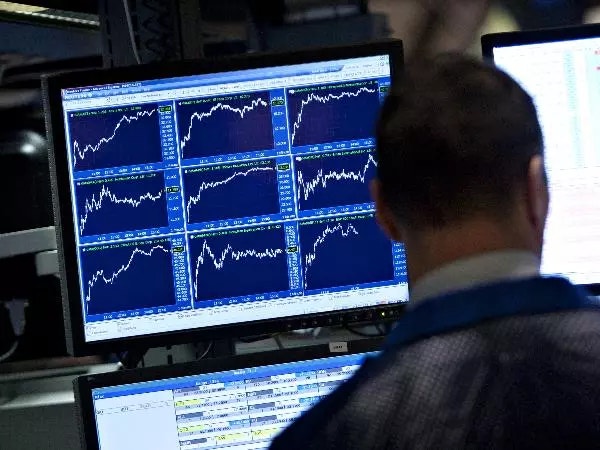Pairs trading explained

What is pairs trading?
Pairs trading is a strategy that involves using two positions, one short and one long, on two markets with high correlation. It can be used across equities, indices, FX or commodities, or any combination of markets.
How does pairs trading work?
Pairs trading is non-directional and seeks to use two markets where prices are currently trading in a relationship that is outside their historical trading range. The idea is to buy the market that is undervalued relative to the other, while selling the one that is overvalued. It seeks to maintain neutrality by keeping the exposure on each trade identical.
What are the benefits of pairs trading?
The strategy has several positive elements. Firstly, the matching of a long position with a short one in a correlated instrument creates an immediate hedge, with each part of the trade acting as a hedge against the other. The risk of the trade is therefore controlled to a degree, but is not eliminated entirely. For example, when long and short two companies in the same sector, if both prices fall, then the money made on the short position offsets the loss in the long position.
In addition, the strategy can be successful in up, down and sideways markets. The strategy is not dependent on market direction, but rather on the correlation between the two markets. The relative performance of the two markets is the key element, and not just whether the market goes up or down, as is the case for those traders that only go long or short.
The strategy has reduced directional risk, since a trader that goes long or short faces the possibility that the market will move in an opposite direction to that of the trade. But in pairs trading the second position is a hedge against the first, cutting back on the risk.
Pairs trading also features smaller drawdowns. A trade that sees profits of $1000 on one day, but then the second day sees that fall to $500 has a drawdown of $500. But the loss on one position is tempered by profits on the other, and thus the expected drawdown of the strategy can be smaller.
Examples of correlated pairs
Correlation is determined on a scale of -1 to +1. The higher the value, the stronger the positive correlation, with two markets moving in the same direction for a large amount of time. A negative reading indicates that the two markets are moving negatively, in the opposite direction, while a reading of 0 shows that there is no correlation in the price movement of the two markets.
Correlations can change over time, and strengthen and weaken, as well as changing their correlation from positive to negative. Thus, it can be difficult to find constant examples. However, companies in the same sector, such as supermarkets, or mining, usually see their correlations remain constant.
FX pairs with the same ‘base’, eg EUR/USD and GBP/USD, can be highly correlated in a positive direction. Meanwhile, Brent and WTI can also be positively correlated in the commodities space, while many commodities tend to move inversely to the price of the US dollar.
Pairs trading strategy
To devise a pairs trading strategy, a trader will need the price data for the two markets, and then create a ratio (one market’s price divided by the other). When the ratio between the two moves outside its normal range then a trading opportunity is created.
To identify this, the trader can use Bollinger Bands, which are indicators that contain upper and lower bands that are two standard deviations from the ratio’s price. When the ratio hits the top or bottom Bollinger band, then a trading opportunity is created.
What you need to know before pairs trading
While it sounds like an ideal strategy to avoid the risks of uni-directional trading, pairs trading is not a magic formula. It will not work each and every time. Correlations can change over time, so as ever it is important to manage risk correctly, risking only 2% of your capital on each trade. Indeed, given that a pairs trader is using two rather than one position, perhaps this should be dialed down to 1% of capital for each trade.
Two markets with no correlation are like two dogs running around together in a park. They are both wandering around, but they are both independent so there is no meaningful connection to their movements. However, a man walking his dog is an example of correlated movement. The dog may wander away from the man, but it will eventually come back. The man and his dog are correlated, and the times when the dog moves away from the man are examples of the ratio between two markets becoming stretched.
Fundamental and technical analysis for pairs trading
The beauty of pairs trading is that it can be utilized by both fundamental investors and technical analysts. Fundamental investors could use the valuation of both for the ratio, and when one becomes too expensive relative to the other market then a trading opportunity is created, buying the undervalued one and selling the overvalued one.
Technical investors will just use the price, but since the price is essentially a function of expected earnings in the future, the overall approach is the same.
Pairs trading risks
Pairs trading relies on mean reversion. A trader is buying the underperformer and selling the outperformer, on the basis that this relationship will change course in due course. However, financial markets are constantly changing, and there are times when the relationship evolves, and the under/over-valuation does not mean revert.
For example, Ford and General Motors (GM) were closely correlated in the years before the financial crisis, but in 2008 a trader that was long General Motors and short Ford would have seen the ratio go to zero when GM went bankrupt. In addition, with pairs trading you are paying the spread twice, and thus increasing your trading costs. Finally, the ‘anomaly’ in the ratio that gave rise to the pairs trade in the first place may go on for longer than planned, or continue to increase, resulting in an unsuccessful trade or one that is stopped out.
Pairs trading summed up
Pairs trading is a popular strategy, but like all strategies, it is not without risks and it is not successful all the time. As with all strategies, the most important element is risk management. No investor or trader knows how a trade will turn out, and must always guard against the possibility of losses. By following the risk management rule mentioned above, investors and traders can help limit the downside of any unsuccessful pairs trade.
Get started with pairs trading by opening an account
This information has been prepared by tastyfx, a trading name of tastyfx LLC. This material does not contain a record of our trading prices, or an offer of, or solicitation for, a transaction in any financial instrument. You should not treat any opinion expressed in this material as a specific inducement to make any investment or follow any strategy, but only as an expression of opinion. This material does not consider your investment objectives, financial situation or needs and is not intended as recommendations appropriate for you. No representation or warranty is given as to the accuracy or completeness of the above information. tastyfx accepts no responsibility for any use that may be made of these comments and for any consequences that result. See our Summary Conflicts Policy, available on our website.
